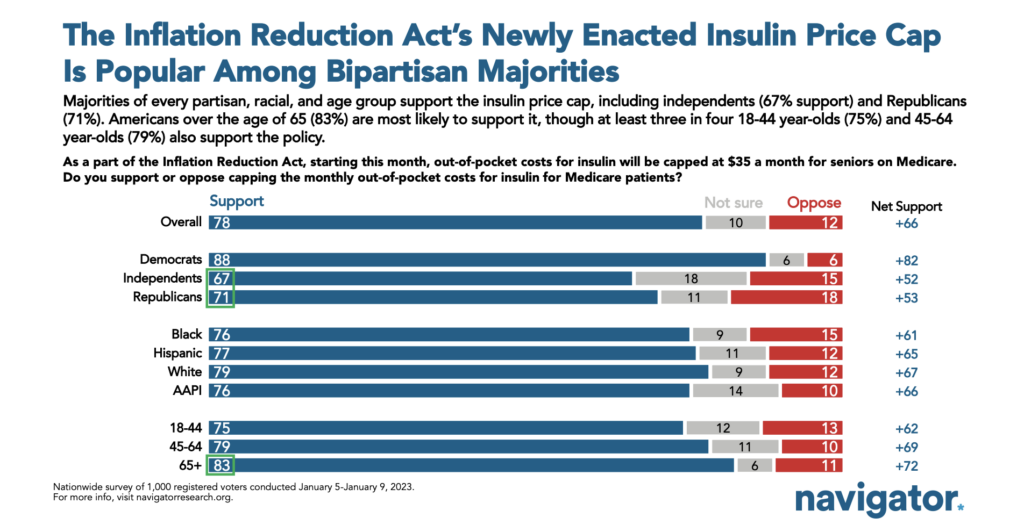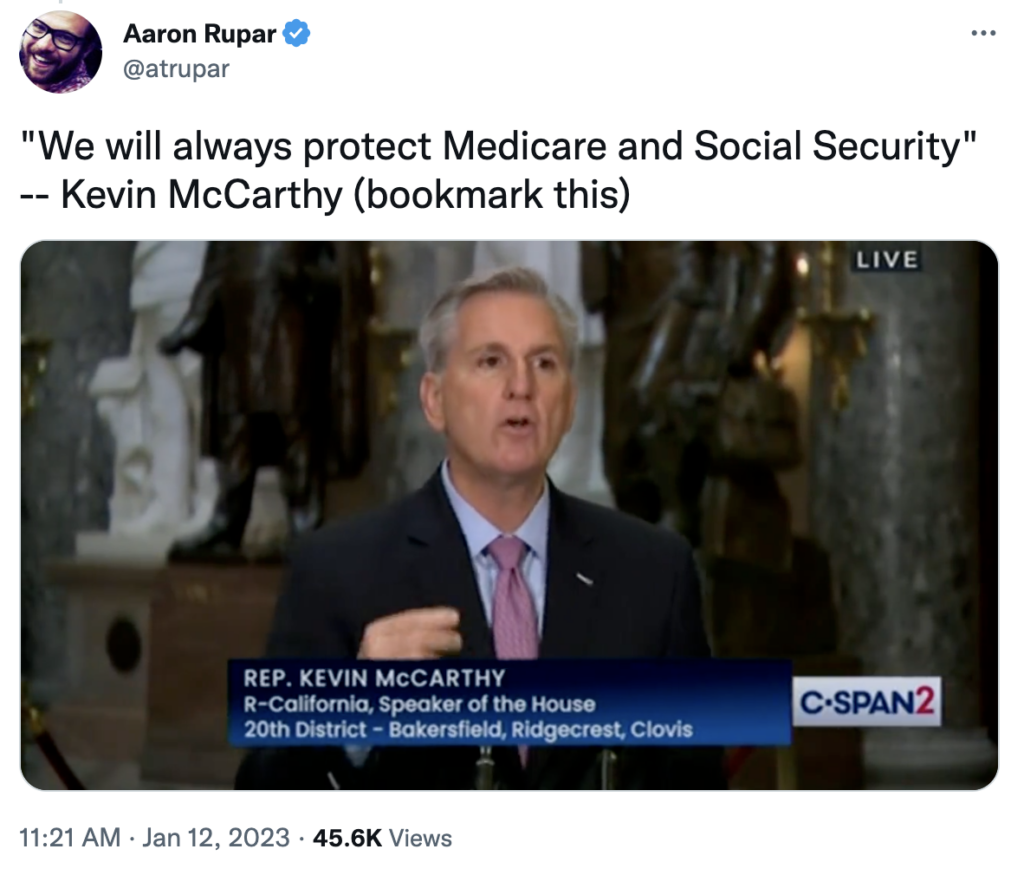This week, we spotlight the recent 7th Annual Day of Racial Healing, new academic initiatives to build the workforce of the future, state and local-level action to promote equity, academic-industry partnerships to generate better information to guide ongoing health promotion efforts, and new national research that underscores the urgency of these issues.
Addressing systemic racial, ethnic, and other inequities in health is among the most pressing issues in America. The causes of these inequities, and the corresponding actions needed to tackle them head on, are multi-faceted. As it stands, marginalized communities, including people of color, rural Americans, LGBTQ+ people, and people with disabilities, face worse access to quality, affordable health coverage, which contributes to dangerous health outcomes.
Protect Our Care is dedicated to making high-quality, affordable and equitable health care a right, and not a privilege, for everyone in America.
7TH ANNUAL NATIONAL DAY OF RACIAL HEALING
EIN Newswire: The National Collaborative for Health Equity Launches New Scholarly Papers on Racial Health Equity to Mark the 7th Annual National Day of Racial Healing. “Celebrating the 7th annual National Day of Racial Healing, the National Collaborative for Health Equity (NCHE) today released an inspiring roundtable discussion with NCHE Senior Scholars on striving for racial equity and announced the launch of their new podcast series, NCHE PRESENTS: Leaders Pursuing Health Equity In America. It was seven years ago today that the National Day of Racial Healing was launched by the W. K. Kellogg Foundation as part of a comprehensive framework that calls for acknowledgement of the pain caused by racism and provides concrete methods of healing the wounds of the past and moving forward towards racial equity in our communities. The next issue of Health Equity, which will be published on January 20, 2023, will include articles by the NCHE Senior Scholars. Their work aligns with the pillars of a framework that engages communities, organizations, and individuals from multiple sectors across the United States in racial healing and addressing present-day inequities linked to historic and contemporary beliefs in a hierarchy of human value.” [EIN Newswire, 1/17/23]
Every Child Thrives: Calls for Solidarity After the National Day of Racial Healing. “We celebrated the 7th National Day of Racial Healing this week with millions of others across the country. While a major milestone moment, racial healing is not limited to a single moment in time. Each of us – with our families, friends, neighbors, co-workers and communities – can show up 365 days a year to act on a commitment to racial healing. Perhaps you participated in an event, watched the town hall on MSNBC or Telemundo or discovered new resources. But what’s next? What are some ways you can take action to advance racial healing throughout the year? Engaging with the Solidarity Council on Racial Equity (SCoRE) is a great way to start! Through SCoRE, the Kellogg Foundation works in partnership with global change leaders in advocacy, the arts, business, education, faith and media. Each of these changemakers stands at the forefront of equity in the public arena, and each is celebrated in their professional sphere. SCoRE members draw people toward collaboration in pursuit of healing, racial progress and transformation. They work individually and collaboratively, and stand collectively – inspiring others to dismantle systemic injustice. They demonstrate throughout the year ways each one of us has a role in this effort.” [Every Child Thrives, 1/19/23]
WORKFORCE AND EDUCATIONAL INITIATIVES
Nashville Post: Meharry Set to Establish a New School of Public Health. “Meharry Medical College announced Wednesday that it has launched a Global Health Equity Institute. The institute serves as the first step in creating a school for global public health. Meharry is touted as the first historically black college or university to establish such a school, according to a press release. The goal is to open the school by 2026. National Health Equity figure Daniel Dawes will lead the institute and plans to establish the future school. He will also work to earn accreditation and hire 21 faculty members. Dawes was formerly executive director of the Satcher Health Leadership Institute, the health equity and advocacy branch of the Morehouse School of Medicine in Atlanta. He announced his move to Meharry in December. [Nashville Post, 1/19/23]
PR Newswire: Xavier University and Ochsner Health Partner to Create a New HBCU College of Medicine. “The two institutions will create a strong physician pipeline that addresses longstanding inequities within the nation’s health care system and builds the health care workforce of the future. This initiative builds on a long-standing partnership between Ochsner and Xavier that dates to the early 1980s, when Ochsner and Xavier’s College of Pharmacy came together to offer more clinical training sites for pharmacy students. Xavier’s College of Pharmacy is the oldest in Louisiana and has for years been among the top in the nation in producing African American graduates with Doctor of Pharmacy degrees. To launch the College of Medicine, Ochsner and Xavier will form a nonprofit corporation, create a new curriculum and use facilities, personnel, and administrative processes of both institutions. The new College of Medicine will be governed by a board of directors nominated by Ochsner and Xavier, with each institution appointing an equal number of directors.” [PR Newswire, 1/17/23]
Patient Engagement HIT: The Potential of Value-Based Care Models to Create More Equitable Patient Care. “Medical Home Network (MHN) isn’t new to care coordination. For 20 years, the Chicago-based accountable care organization (ACO) has focused on bringing care coordination into the primary care office, using community health workers to provide whole-person care. But now, as a part of the ACO REACH Model, MHN looks forward to a future free from the constraints of fee-for-service and focused on health equity and social determinants of health. CMS launched the ACO REACH (Realizing Equity, Access, and Community Health) model in February 2022 as a replacement for the Global and Professional Direct Contracting model. The agency said ACO REACH will promote health equity and address health disparities while centering provider-led organizations. When an organization participates in a capitated value-based care model, it enjoys more freedom to innovate in community-based care. An organization like MHN participating in ACO REACH will be totally focused on outcomes, [Abigail] DeVries said, and less on fee-for-service. DeVries indicated that something like the ACO REACH model is a key solution to ensure traditionally marginalized patients—who mostly visit FQHCs or else get their care from high-acuity settings like the emergency department—would be left behind. But that emphasis on traditionally underserved groups is made evident through certain parameters that participants must hit as part of ACO REACH. For one thing, MHN must report on its health equity data as part of its participation in the model. A separate $250,000 grant from the Health Resources and Services Administration (HRSA) will help MHN train unlicensed folks as community health workers to support maternal health coaching efforts. These community health workers will be part of the care team, helping to coach during pregnancy and offering support post-partum.” [Patient Engagement HIT, 1/9/23]
Health Leaders: Duke and Evidation Partner to Combat Inequities in the Digital Health Studies. “Duke University is joining forces with a California-based digital health firm to develop technology to measure health equity in clinical studies. Studies indicate that racial and ethnic minorities only comprise 6% of clinical trial populations, yet account for 28% of the US population. Duke’s BIG IDEAs Lab uses biomedical and health data to create programs for the early detection, intervention, and prevention of disease. This includes projects that highlight ‘improved health monitoring through personalized, real-time risk classification and tailored, remote intervention strategies.’ ‘Inclusion of underserved and underrepresented populations in research and study adherence among all groups are key challenges for enabling patient-centered healthcare,’ added Iredia M. Olaye, PhD, MSc, MHA, a member of Evidation and the Covered By Group investment and advisory firm.” [Health Leaders, 1/17/23]
Healthcare Innovation: Notre Dame and Accenture Launch New Health Equity Data Lab. “On Jan. 4, South Bend, Ind.-based University of Notre Dame announced via a press release it is partnering with Accenture to launch a health equity data lab. ‘With the support of a gift from Accenture, the first undertaking for the lab is the Accenture Health Equity Data project, led by Nitesh Chawla, the institute’s founding director and the Frank M. Freimann Professor of Computer Science and Engineering. Accenture has also committed to a fundraising campaign with its employees and alumni, including those who have ties to Notre Dame, over a three-year period.’ The Accenture Health Equity Data project will use artificial intelligence and machine learning to address healthcare challenges. The project will convene a business forum of leaders that include academics, government, corporations, and non-governmental organizations to talk about specific community healthcare inequities and solutions.” [Healthcare Innovation, 1/9/23]
CHALLENGES
Health Affairs: New Study Shows Inequities of Care Along Racial Lines for Medicare Recipients Struggling with Mental Health and Substance Abuse Disorders. “Medicare introduced cost-sharing parity for outpatient MHSUD care during the period 2010–14, reducing beneficiaries’ out-of-pocket share of MHSUD spending from 50 percent to 20 percent. Among traditional Medicare beneficiaries ages sixty-five and older, we examined changes in MHSUD use and spending during the period 2008–18 for low-income beneficiaries with the cost-sharing reduction versus a control group of beneficiaries with free care throughout the study period among Black, Hispanic, Asian, and American Indian/Alaska Native versus White beneficiaries. Among older Medicare beneficiaries, overall use of MHSUD services increased during this period. For White beneficiaries, MHSUD cost-sharing parity was associated with an increased likelihood of having specialty MHSUD visits and medication use and a reduced likelihood of having unmonitored MHSUD medication use and MHSUD emergency department visits and hospitalizations. However, cost-sharing parity was associated with smaller or no gains in MHSUD services use for racial and ethnic minority beneficiaries compared with White beneficiaries, thus widening racial and ethnic disparities in MHSUD care.” [Health Affairs, 1/9/23]
CBS News: Trans Patients Are Struggling to Find Doctors in Rural America. “Accurately counting the number of transgender people in rural America is hindered by a lack of U.S. census data and uniform state data. However, the Movement Advancement Project, a nonprofit organization that advocates for LGBTQ+ issues, used 2014-17 Centers for Disease Control and Prevention data from selected ZIP codes in 35 states to estimate that roughly 1 in 6 transgender adults in the U.S. live in a rural area. When that report was released in 2019, there were an estimated 1.4 million transgender people 13 and older nationwide. That number is now at least 1.6 million, according to the Williams Institute, a nonprofit think tank at the UCLA School of Law. One in 3 trans people in rural areas experienced discrimination by a health care provider in the year leading up to the 2015 U.S. Transgender Survey Report, according to an analysis by MAP. Additionally, a third of all trans individuals report having to teach their doctor about their health care needs to receive appropriate care, and 62% worry about being negatively judged by a health care provider because of their sexual orientation or gender identity, according to data collected by the Williams Institute and other organizations. A lack of local rural providers knowledgeable in trans care can mean long drives to gender-affirming clinics in metropolitan areas. Rural trans people are three times as likely as all transgender adults to travel 25 to 49 miles for routine care.” [CBS News, 1/20/23]
Axios: Mothers in States Which Have Banned Abortion Almost Three Times As Likely to Die. “The U.S. has the highest maternal mortality rate among developed nations, and government officials and health experts are concerned that conditions will worsen now that a federal right to abortion has been struck down. The Gender Equity Policy Institute divided states into three groups — supportive of abortion access, restrictive and banned — and compared data on reproductive health outcomes between 2015 and 2021. 29 states were in the ‘banned’ and ‘restrictive categories’ and 21 states and the District of Columbia were in the ‘supportive’ category. The report found that maternal mortality rates in states with bans was “significantly higher” than in supportive states. In 2018, the maternal mortality rate in banned states was nearly two times higher than in supportive states, by 2021, it was 2.4 times higher. Maternal mortality weighed heaviest on women of color: Native American women’s maternal mortality rates were 4.5 times higher than those of white women and Black women’s rates were 2.6 times the rate of white women.” [Axios, 1/19/23]
Fatherly: Wealthiest Black Moms Are More Likely to Die During Childbirth Than the Poorest White Moms. “When women in America suffer, Black women suffer the most. Never is this truer than when it comes to pregnancy, where staggering racial disparities in maternal and infant health represent an ongoing public health crisis in dire need of solutions. Here, in the only industrialized country where overall maternal mortality is rising, Black women remain between three and four times more likely than their white or Hispanic counterparts to die from pregnancy-related complications. And although Black women suffer above-average rates of pregnancy-related complications such as preeclampsia, uterine fibroids, and preterm birth, they’re also less likely to have access to quality care, creating a double-edged sword with compounding factors on both sides. A new study finds that even the wealthiest Black women are unable to escape this harm. In fact, the effects caused by structural racism are so strong that even the wealthiest Black women and their newborns experience worse outcomes than those from the lowest-income white families. In other words, the maternal health gap is a trap of systemic racism with roots so deep that no amount of money can buy a Black woman a path out of it. And because the data used in the study all came from California, a state that regularly lands way above national averages for different maternal health metrics, these trends are likely to also be true elsewhere in the country — and may even be more exaggerated in other states.” [Fatherly, 1/7/23]
Healio: Social Factors Linked to Health Disparities in Black and White Prostate Cancer Patient Outcomes. “A relationship between race and social determinants of health contributed to significantly higher prostate cancer-specific morality among Black men in the United States, results of a meta-analysis in JAMA Network Open showed. Previous studies of Black men in the U.S. with prostate cancer showed consistent disparities in social determinants of health that have been associated with poorer health care outcomes, according to Randy A. Vince Jr., MD, MS, of University Hospitals Urology Institute and UH Seidman Cancer Center in Cleveland, and colleagues. The study population comprised 1,019,908 men (median age, 66.4 years; interquartile range [IQR], 64.8-69), including 843,880 white men and 176,028 Black men. [T]he investigators observed significant interactions between race and social determinants of health for both PCSM (regression coefficient = –0.041; 95% CI, –0.059 to 0.023) and OS (meta-regression coefficient = –0.017; 95% CI, –0.033 to –0.002).” [Healio, 1/11/23]
Washington Post: Natural Disasters Further Emphasizing Racial Health Disparities in Cities Like Buffalo. “The recent Christmas blizzard in Buffalo was one for the ages, dropping more than 50 inches of snow — and putting the city over 100 inches for the season, a bit more than its average annual total. Now many Buffalo residents are making legitimate complaints about how unevenly the weather and the snow have affected Black and White residents. Most tragically, Black people have been overrepresented among the dead. Community leaders point out that Buffalo’s whiter neighborhoods and suburbs were better prepared for the weather. And in the aftermath of the storm, their streets were cleared of snow more quickly than those in Black neighborhoods. Great Lakes cities are as familiar with segregation as they are with snow. The region is well-represented on lists of the country’s most segregated cities, especially when it comes to Black-White segregation. To be sure, the Rust Belt is not the only part of the United States with separate neighborhoods for Blacks and Whites. Crises have exposed similar disparities in the South and West — for example, Houston’s uneven recovery from Hurricane Harvey and the decades-in-the-making water crisis in Jackson, Miss. Clearly, unequal support for Black and White neighborhoods is not uniquely a Buffalo problem. Nor can it be solved simply by electing Black leaders. Buffalo has had a Black mayor, Byron Brown, since 2006. Black voters have long since learned that solving a systemic problem requires far more than changing who’s in office.” [Washington Post, 12/31/22]



 CHASER: NOVEMBER 2022: Kevin McCarthy Said Medicare And Social Security Cuts Could Be Part Of Debt Limit Negotiations.
CHASER: NOVEMBER 2022: Kevin McCarthy Said Medicare And Social Security Cuts Could Be Part Of Debt Limit Negotiations.